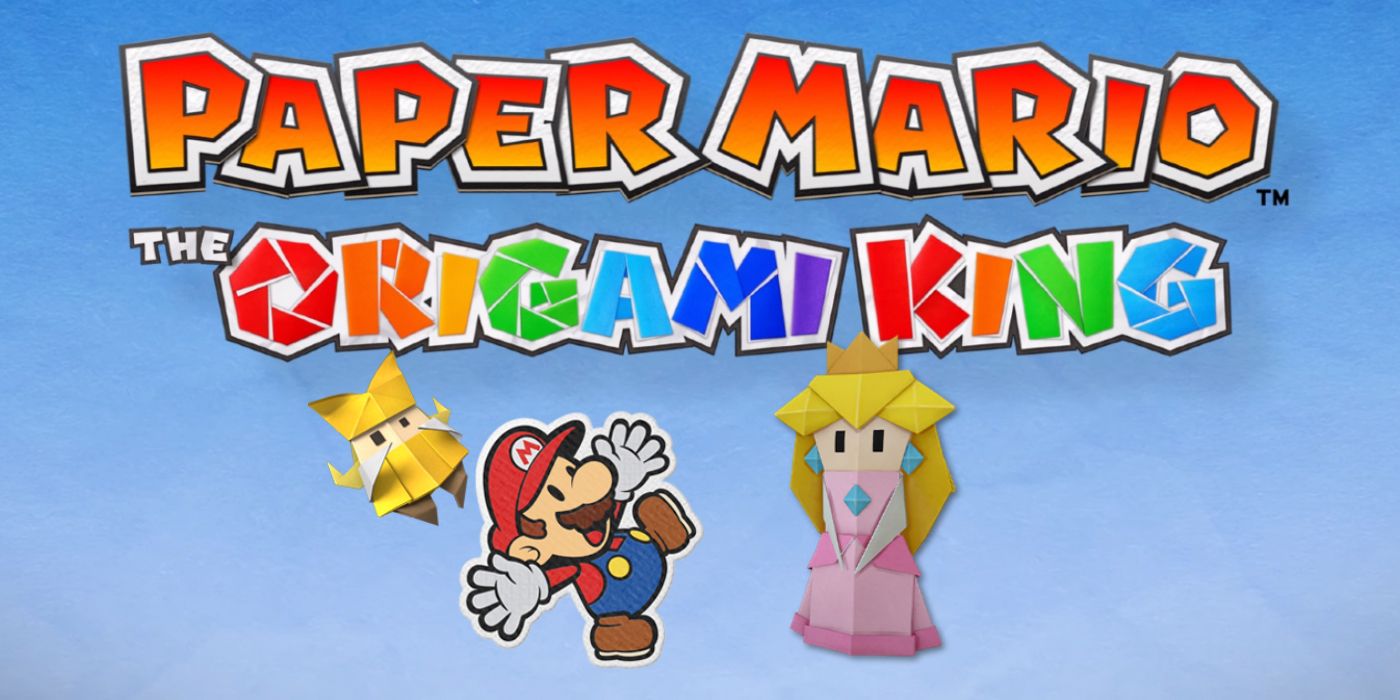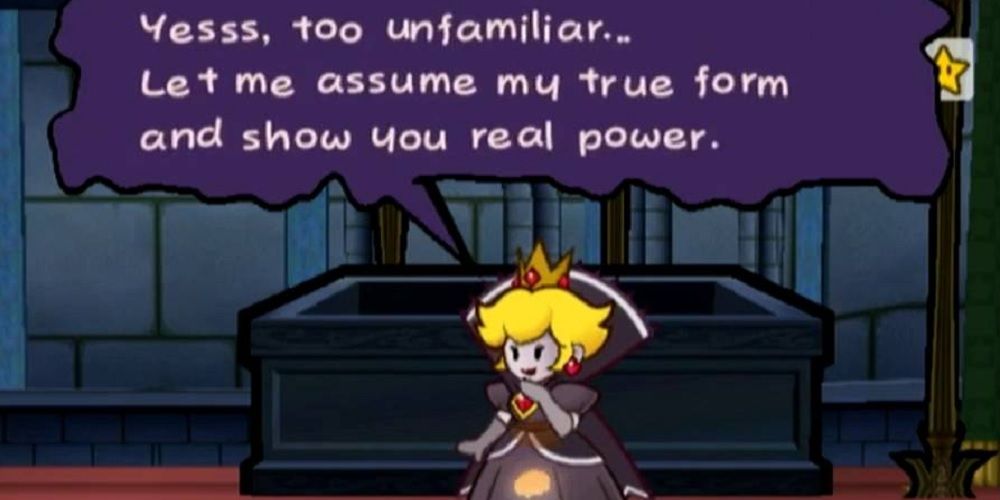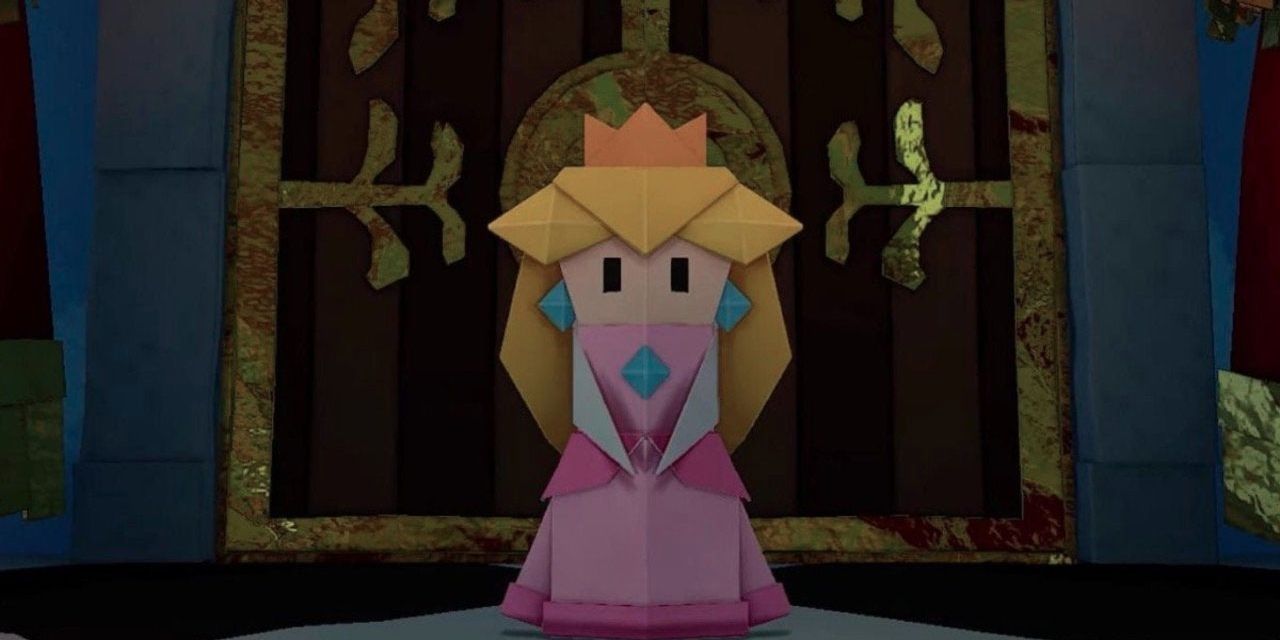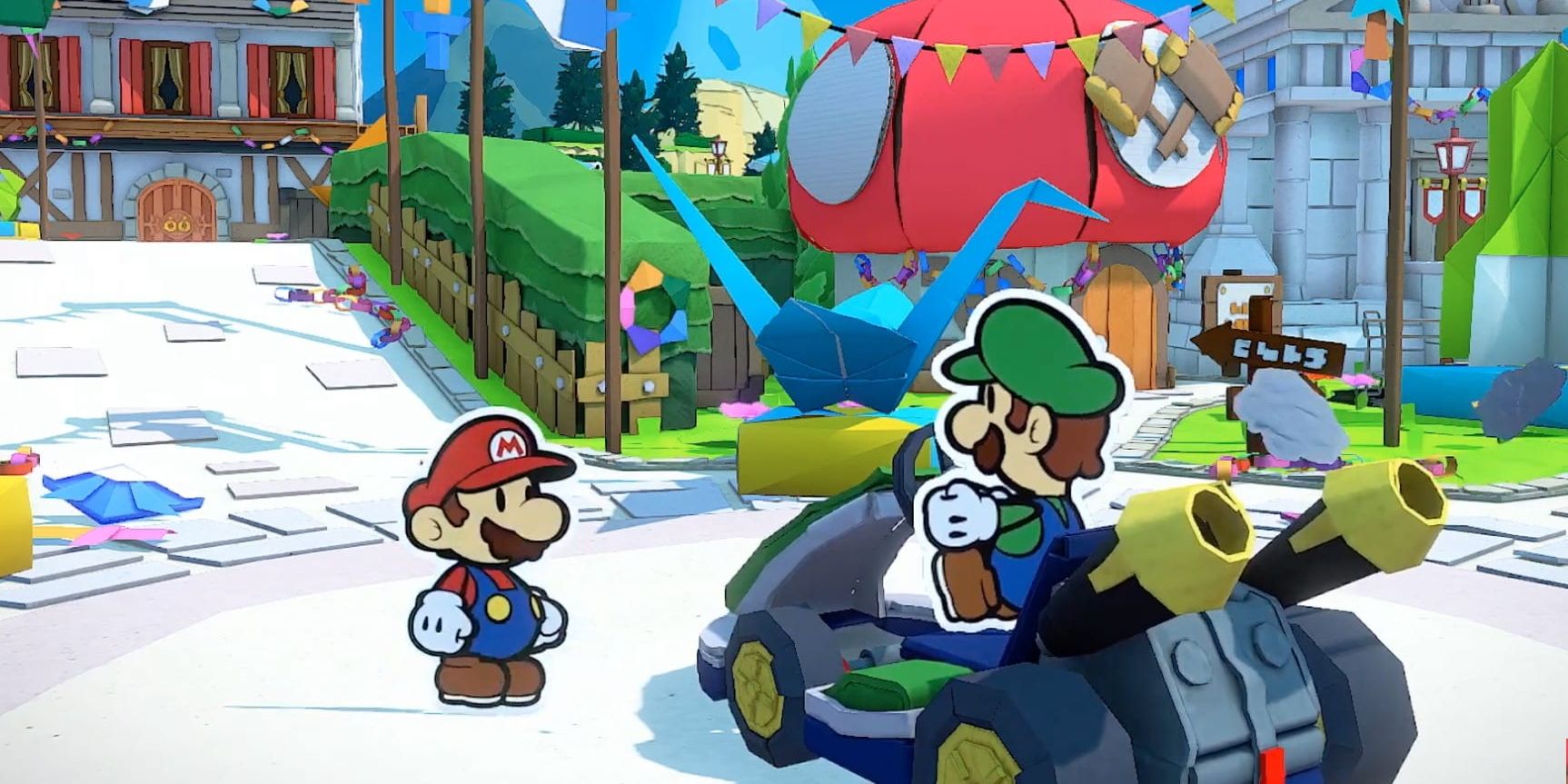Paper Mario: The Origami King came out of nowhere with an announcement trailer on Twitter in May, just months before its July 17 release date. The Nintendo Switch exclusive stood out to many fans of the Mario spin-off franchise for its creepy tone, as the trailer was headlined by a brainwashed, origami version of Princess Peach asking Mario to conform and be folded into her evil cult. Though Peach is not the leader of this group, nor the true instigating force behind it, the idea of following an evil version of Peach for the majority of a Paper Mario game was promising.
Now that the game has been available for a few weeks, it is clear to many that this potential was not capitalized on. There is a lot to love about The Origami King, from its captivating arts-and-crafts design to its often hilarious (and sometimes heartfelt) writing. Even the puzzle-based combat system in The Origami King, initially decried for continuing to move the series away from its RPG roots, has been met with positivity from some for being innovative and engaging in its own right. However, the developers did not properly utilize one of their game's biggest marketing pushes.
Following The Origami King's release, series producer Kensuke Tanabe told VGC that Paper Mario devs have followed strict rules since Paper Mario: Sticker Star on the 3DS, mandating that they cannot modify Mario characters or create new original characters within the universe. Instead, all additions to Paper Mario games have to be completely divorced from the series, explaining why partners modifying classic enemies like Goombas and Koopa Troopas no longer appear. Having an evil Princess Peach seems like a useful way to create intrigue within these boundaries, but the developers did not take a lesson from The Thousand-Year Door that they should have.
The Thousand-Year Door's Evil Peach
One enduring image from beloved GameCube title Paper Mario: The Thousand-Year Door is Shadow Queen Peach. To summarize the game quickly, Mario's adventure has him collecting Crystal Stars so he can open an ancient underground chamber believed to house untold treasures from a forgotten age. Players come to find out the door is actually locking away a demon called the Shadow Queen, whom the villainous X-Nauts believe they can control to take over the planet. After possessing Peach to begin regaining her strength, the Shadow Queen battles Mario and is, of course, defeated.
As striking and memorable as the Shadow Queen Peach battle is, the fact that it is an 11th hour reveal means there is very little time to soak in an evil Peach — the character who has universally been a symbol of purity and good will since the earliest days of the 35-year-old Super Mario franchise. The Origami King could have outdone The Thousand-Year Door by making Peach a recurring threat while under King Olly's control. However, the game's marketing vastly over-sells this facet of its story.
The Origami King and Origami Peach
Origami Peach is the first thing players encounter in The Origami King, much like she headlined its reveal trailer. Mario finds the brainwashed princess after arriving at Toad Town's Origami Festival to find it devoid of life. However, once it is revealed that King Olly is running the operation and turning Mushroom Kingdom residents into Folded Soldiers, Peach takes a backseat. The game's driving force has Mario and Olly's sister Olivia destroying streamers that have made Peach's Castle inaccessible, so by design Peach is unable to be seen until the end.
Part of what makes sidelining Peach frustrating is seeing how effective King Olly is as an antagonist because of his presence throughout the game. He does not personally appear often, but every sticker, "Paper Macho" enemy, and boss that comprises the Legion of Stationery (papercraft tools like colored pencils and a hole punch) bears Olly's emblem, so the player is always reminded that he is behind the world's turmoil. Olly's main appearance after Chapter 2 also does an excellent job building legitimate stakes for Mario's adventure through an emotional story development.
Princess Peach, on the other hand, gets next to nothing beyond typical "damsel in distress" lip service, which is a shame. Not only does Origami Peach have a fan-favorite design, but there are numerous references to her benevolent, loving rule over the Mushroom Kingdom that would be enhanced if players had more time to see her newly-corrupted state. In fact, a major story beat surrounding Mario's lovable brother would be far more effective if The Origami King used Peach less sparingly.
The Luigi Connection
When Mario arrives at the Origami Festival at the beginning of the game, he is accompanied by a Mario Kart-driving Luigi. In the opening moments it is established that Luigi wants to find the key to the front door of Peach's Castle after the brothers are locked in, and this becomes a running gag throughout the adventure. Whenever Mario and Olivia need to enter an important area, lo-and-behold it is Luigi who has found the key believing it was the way into Peach's Castle.
As consistently funny as this joke remains throughout the adventure, part of what makes it so believable is how genuinely concerned Luigi is for Peach's well-being. Whenever it turns out his key is a dud, the green-clad plumber laments that he should have known, citing Peach's various aesthetic preferences and kind nature as reasons why. His presence in the story essentially highlights how well the Mario brothers know Princess Peach, as well as how much they care about her. Yet, there are next to no opportunities to contrast this with the evil, brainwashed Peach prominent on the game's box art.
In a game where the major underlying side-quest has Mario saving Toad citizens who have been folded up, stuffed behind walls, or literally crumpled up and thrown away, it feels especially disappointing that there are no moments where their traditionally benevolent, loving ruler is the one giving those cruel and unusual orders. The lack of Princess Peach in The Origami King does not ruin the game — King Olly makes for a wonderful antagonist in his own right, particularly when players learn more about his backstory. But considering Peach is already downplayed in most mainline Mario games, and typically shines in titles such as Super Paper Mario, it is a shame to see her so underutilized.
Paper Mario: The Origami King is available now on Nintendo Switch.




